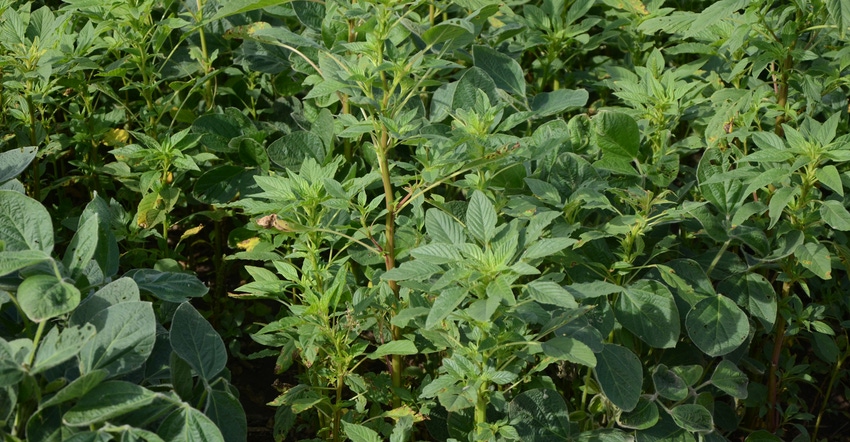
Following a challenging 2020 growing season filled with dry conditions and straight-line winds, it’s strongly expected that 2021 will be rife with volunteer corn challenges as a result of downed corn in 2020. However, for many, weeds like marestail, giant ragweed, waterhemp and Palmer amaranth will continue to be a problem — especially herbicide-resistant populations.
As 2021 gets underway, Bob Hartzler, Iowa State University Extension weed management specialist, notes the first step to starting clean in the new growing season is identifying the top problem weeds. This includes scouting fields after fall and spring burndown applications to determine how effective those applications were.
ID weeds in fields
The first step is identifying what weed populations are resistant to different herbicides.
“Without that knowledge, you’re shooting blind,” Hartzler says. “It’s not always easy knowing exactly what those weeds might be resistant to. But the best way is to scout the field about two weeks after the last application, and see if there are any weeds in that field that are surviving that application that you feel should have been controlled. If they are surviving, it’s a possibility you’re dealing with a new resistant biotype. So paying attention to how individual products are working is critical so you know what resistances you might have.”
Of course, using layered residuals is always best when dealing with weeds like resistant waterhemp and Palmer amaranth because of their prolonged emergence patterns.
“Switching to a layered residual requires a change in timing of post applications. Historically, we’ve tried to delay that post application as long as possible so we could have as many weeds emerge before we spray as possible,” Hartzler says. “You always want to get out there before the weeds get 3 or 4 inches in size. But still, we were delaying it as long as we could. With a layered residual, we want to be applying our post product … while the first pre is still active. That’s typically maybe three weeks after planting, which would be earlier than most people do it.”
The layered residual approach is a change in mindset, he says, adding it’s based on the calendar, rather than the size of the weeds.
“With widespread resistance, a lot of growers probably are going to be down the lane of using one of the resistance traits that locks you in to either dicamba, 2,4-D or Liberty,” Hartzler says. “The theory of the layered residual is we have the preemergence product controlling the majority of the population, and our post-product, whether it’s Liberty, Enlist or XtendiMax, Engenia, what have you, controls the weeds that slipped through those pre-products and, hopefully, reduces the likelihood of selecting resistance to those pre-products. A strong pre-program reduces the likelihood of resistance to the post-products”
Cover crops can help
However, overreliance on herbicides will ultimately select for resistance, regardless of how efficiently we use them. This is why we need alternative control tactics, and one that can fit into many operations is the planting of cover crops..
“It’s not as simple as harvesting corn, spreading some rye seed and then going forward as if nothing else has changed,” Hartzler says. “The growers who are really taking advantage of cover crops in terms of weed management are looking at hybrid and variety selection, going to shorter-season varieties so they can get corn out a little earlier, giving more time to get rye planted, and then holding off on planting soybeans until mid- to late May to allow biomass accumulation.”
“We’ve been blessed that in terms of weed management for the past 30 years, all we had to think about was, ‘What herbicides am I going to use?’ Those days are coming to an end because of the spread of resistance,” he adds. “For the majority of farmers, herbicides still are going to be No. 1 for controlling weeds. But they need to look at, ‘How else can I put some selection pressure on those weed populations to slow down this evolution of resistance?’”
About the Author(s)
You May Also Like






